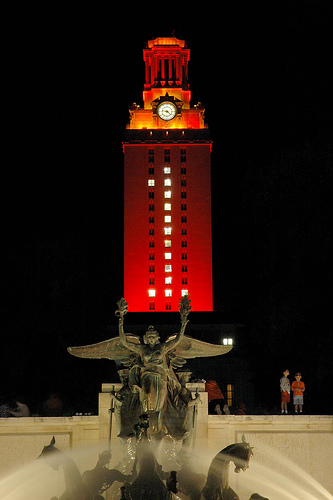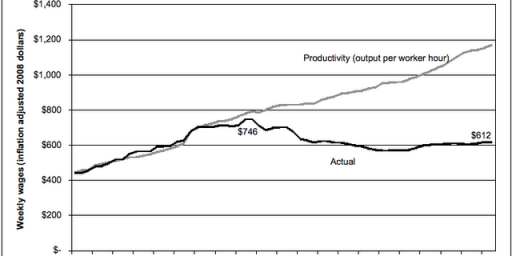University of Texas Professors: Already Teaching
Texas A&M professor finds serious flaws in college faculty productivity study.
 Texas A&M University-College Station political science professor Joseph Daniel Ura takes a look at the numbers underlying Ohio University economics professor Richard Vedder’s WSJ op-ed on faculty productivity at the University of Texas’ flagship campus in Austin (discussed earlier today at OTB by James Joyner here), and finds the analysis to be deeply flawed on a number of dimensions:
Texas A&M University-College Station political science professor Joseph Daniel Ura takes a look at the numbers underlying Ohio University economics professor Richard Vedder’s WSJ op-ed on faculty productivity at the University of Texas’ flagship campus in Austin (discussed earlier today at OTB by James Joyner here), and finds the analysis to be deeply flawed on a number of dimensions:
The [Center for College Affordability and Productivity] report is technically accurate but substantively misleading. In particular, the CCAP provides a muddled picture of teaching at UT by describing the distribution of teaching duties for the university’s entire faculty together, lumping together data on full-time faculty with data on part-time faculty and data from graduate colleges and programs with data from colleges and programs that mainly serve undergraduates. As a result, the CCAP report creates a false impression of inequity in the assignment of teaching duties at UT and overstates the feasibility of reducing faculty costs without undermining the quality of UT’s academic programs.
James, of course, pointed out some of the same issues in his previous post. Ura further illustrates that when you break the numbers down, most of the main undergraduate colleges at UT-Austin meet CCAP’s recommendation that faculty teach, on average, 300 150 students a year already:
CCAP’s aggregate analysis of UT’s data masks the existence of much high volume teaching already in place at UT. Indeed, several of colleges at UT already exceed the productivity guidelines suggested by Dr. Vedder’s Wall Street Journal editorial. Faculty in the colleges of Business, Communication, Natural Sciences, and Pharmacy all teach a weighted average of more than 150 students each year. Also, faculty in the colleges of Liberal Arts and Engineering are within 10 percent of a 150 student per year target (weighted average), as is the university as a whole. Thus, in colleges for which economies of scale may be reasonably leveraged to provide instruction to large numbers of students, average faculty teaching productivity is quite high.
In contrast, lower teaching loads are centered in colleges that principally serve graduate students or require the close supervision of students in clinical, practical, or performance settings. Half of the colleges with weighted average faculty teaching loads of less than 100 students per year — the colleges of Law, Public Affairs, and Social Work- — are exclusively or predominantly oriented towards graduate and professional studies. Among low-teaching load colleges that principally serve undergraduate students, the academic programs offered by the colleges of Architecture, Nursing, and Fine Arts almost certainly deal with subject matter that simply requires closer supervision of students than we might expect in other undergraduate colleges on average.
The sad irony of this whole issue is that Vedder, as a tenured faculty member at a research-oriented university, should know better than to produce a slipshod report, but apparently is so blinded by his animus toward his own university’s redirection away from a teaching-oriented mission over the past decades to that of an emerging research university—the sort of redirection that is necessary to attract and retain world-class faculty in this day and age—that he is willing to undermine his own broader argument about the prioritization of minor, incremental research over teaching (which, like James, I share some sympathy with) by advancing a weak analysis that is an easy target for criticism from within the ivory tower.
Post image © Twitter user BlazerMan. Used under a Creative Commons license. (Post edited to correct an error in the student head count target.)






The key question for me is whether structural changes in the university are responsible for increasing costs, or if the structure remained the same and some component costs are responsible for the increase.
This article is a few years old, but it has all the well-known graphs, of costs versus inflation.
People can argue the details of this study, and should, but the whole point of that push and shove should be a good answer on the costs question.
Do we have one?